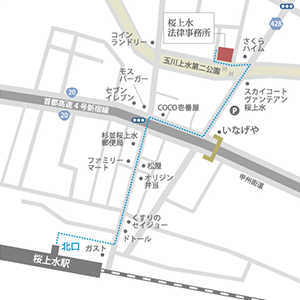Difference between Us and Canadian Legal System
Another interesting difference between the Canadian and U.S. criminal justice systems is whether someone who testifies has to answer a question. The U.S. Constitution contains the Fifth Amendment, which allows a person to refuse to testify so as not to incriminate himself. This rejection is commonly referred to as a “plea for the fifth.” You cannot “plead for the fifth” in Canada. If a subpoena is summoned, a witness must appear in court and testify. During testimony, a witness must answer all questions put to him or her and must not refuse to give an answer. In fact, a witness who refuses to give an answer may be detained until he or she is ready to answer the question. Since the witness is legally obliged to give an answer, the answer cannot be used against him later. On the other hand, an accused is not required to testify in his own trial, but may testify as part of his defence. Since an accused is not compelled to testify, the answers can be used to incriminate him. However, questions put to a defendant may be limited to specific areas related to the specific allegations against him, but in general, once a defendant takes a position, he must provide answers to all questions.
Whether or not to testify is one of the most important decisions an accused will make during the criminal trial. It should not be taken lightly. If you have an upcoming trial, it is strongly recommended that you consult a lawyer to fully understand the consequences of this decision. Many are formulated as general principles for dealing with any dispute that may arise. Unlike common law courts, courts in a civil law system first review a civil code and then refer to earlier decisions to see if they are consistent. The courts are not the only mechanism for resolving disputes between individuals. Less formal procedures include alternative dispute resolution, private commercial arbitration, and appearance before boards of directors and courts. Even on issues that are never brought before the courts, court decisions influence people`s decisions and actions. They provide advice on what the law is and how people should behave to make sure they comply with it. Although both the United States and Canada have succeeded in their federal participation, Canada`s Parliamentary Confederation has structured the justice system very differently – something we will discuss shortly. One similarity between the two systems is how difficult it can be to navigate them. Lawyers are essential to achieve the best possible result on both sides of the border.
If you or a loved one has been charged with violating the Canadian Criminal Code, you need an effective defence lawyer to defend your interests. Despite Canada`s physical and cultural proximity to the United States, Canadians are quick to point out more important cultural differences such as free health care in Canada, our penchant for politeness, and our rainbow-colored currency. But many Canadians who grew up with a regime of American movies and TELEVISION shows do not know that our legal systems are very different. Although both the American and Canadian legal systems are based on British common law, there are significant differences in practice. Although many courts in the United States employ or hire translators to assist individual witnesses who speak other languages, there is no right to a trial in a language other than English. The situation in Canadian courts is similar to that of American courts if you prefer Spanish or Vietnamese, but the entire Canadian judicial system operates in two official languages: English and French. Cases and pleadings may be filed in either language, and evidence may be filed in either language. In addition, those present have the right to understand the entire proceedings in the language of their choice, usually at the expense of the court. Below is a list of things you may not know about the Canadian legal system with respect to criminal law: In Canada, the criminal law is controlled by the federal government in Ottawa. The Canadian Penal Code is a federal law that applies to all provinces and territories. Provinces cannot pass laws that violate the federal government`s constitutional authority over criminal justice.
The purpose of this federal control is to ensure that the criminal law is consistent across the country. This is not the case in the United States, where each state has its own penal code. As a result, a crime in one state may be subtly different in another state, which can lead to problems since there are 50 different criminal laws. There is some federal criminal justice in the United States, but the criminal justice system is largely under the control of each state. Comparing Canada`s criminal justice system to that of the United States is more of a comparison to a typical U.S. state, but there will be differences between states. The term “civil law” is used to refer to two very different things that can be a little confusing at first for people trying to understand the justice system. Sometimes, unlike the common law, the term is used to refer to the legal system based on a civil code such as the Justinian Code or the Civil Code of Quebec. In its other sense, civil law refers to matters of private law as opposed to public law and, in particular, to criminal law, which deals with the harm caused to society as a whole.
The context usually determines what type of civil law it is. In the following sections, we explain the structure of the judicial system – how the courts are organized and how the different elements are related to each other. The final section examines some of the principles and institutions that help maintain the fairness and independence of the Canadian judicial system. 3 There is a Canadian Bill of Rights, but it is unconstitutional and less legally relevant. The Canadian legal system is based on a combination of common law and civil law. Of course, the way the courts are set up will be different from these different ways of binding the country through existing laws. While the structure in the U.S. can be confusing due to fundamental jurisdictional issues between states and federal courts – which could essentially hear any type of case – in Canada, there is a more unified structure that mimics a pyramid structure. In Canada, every provincial court will hear every minor lawsuit — there are rarely site purchases — to ensure that enforcement in that province meets a standard of consistency. [v] There are courts that deal with smaller civil and criminal cases, while the supreme courts of each province deal with the most serious crimes. Each province has its courts of first instance, a court of appeal (not an appellate court) designed to correct “simple errors” that occur at lower levels.
[vi] And although Canada has created a “federal” judicial system, these federal courts with limited jurisdiction remain much less important than the courts in the basic [provincial] structure described above. [vii] This simplistic structure of Canadian courts leaves it to the Supreme Court of Canada to be much more influential in the provinces, giving them the opportunity to promote federalism between the provinces; further promote consistency between applicable laws. [viii] The Canadian judiciary is one branch of our system of government, the others being the legislative and executive branches.



